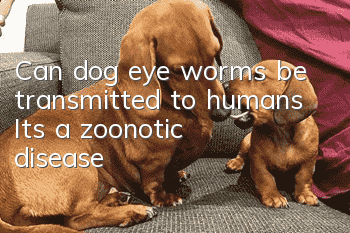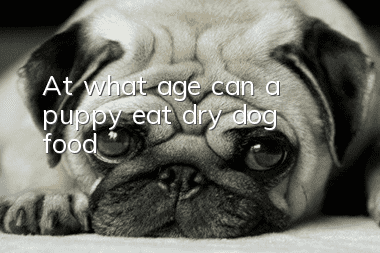What should I do if my Papillon loses hair? Causes and treatments for hair loss in Papillon dogs

What should I do if my Papillon dog loses hair? I believe that many pet friends think that the problem of dog hair loss is normal, but in many cases, the degree of hair loss in dogs also indicates the dog’s health problems. If any owner encounters a serious problem of hair loss in Papillon dogs, the following article may help you!
(1) Causes and clinical symptoms of endocrine disorder hair loss
This kind of alopecia in Papillon dogs can occur in various dogs. Its early changes include pigmentation, dandruff, sparse coat, etc. Later, alopecia appears, which is symmetrically distributed on the abdominal ribs, chest and femoral areas of the dog's body. At present, the most common ones are thyroxine, epinephrine and gonadal dysfunction.
1. Hair loss caused by hypothyroidism. Clinically, affected dogs often show lethargy, fatigue, excessive obesity, infertility, and intolerance to cold; dry and rough skin, sparse coat, and hyperkeratosis.
2. Due to adrenocortical tumors, excessive secretion of adrenocorticotropic hormone from the adenohypophysis, and long-term use of corticosteroids. Dogs suffering from alopecia often present with frequent urination and urine specific gravity lower than 1.020 (normal value is 1.015-1.050); muscle atrophy, easy fatigue, fat tubular distribution, and increased abdominal circumference; thinning of the skin, and obvious epidermal blood vessels and Abdominal skinfolds. Calcium and pigment are deposited unevenly on the diseased skin. Overeating.
3. Gonadal imbalance can be seen in testicular podocyte tumors in male dogs. Alopecia in female dogs is usually related to ovarian cysts. Repeated hair loss-recovery cycles can be seen in the dog's body, accompanied by enlargement of the breasts and vulva.
Diagnosis:
Mainly based on clinical and hormone content determination, but the latter is more difficult.
Treatment method:
Male dogs with testicular podocyte tumors need to remove their testicles and take testosterone orally or by injection. Bitches with ovarian dysfunction should have both ovaries or uterus removed. Try thyroxine, taking it at 0.4 to 0.8 mg/Kg of body weight per day for 4 to 8 weeks as a course of treatment. The dosage is increased in the first 2 weeks and then decreased, and better curative effects can be obtained.
(2) Pathogens and clinical symptoms of ringworm
Ringworm is caused by skin conditional pathogenic fungi (also known as dermatophytes), which can cause damage to the epidermis, hair and claws. There are three main types of dermatophytes in dogs.
1. Microsporum canis exists in the dog body for a long time and only produces mild inflammation. About 50% of ringworms in dogs are caused by this bacteria.
2. Microsporum gypseum is a soil-loving fungus that occasionally causes ringworm in dogs in warm climates, but this inflammatory reaction and infection are self-limiting.
3Microsporum mentagrophytes mainly causes secondary ringworm in dogs, and rats are the main carriers. The main cause of dermatophyte is that mycelium invades the hair column, hair follicles and cuticle, causing hair loss and dandruff. It mostly occurs on the head, feet and legs, and is prone to occur in puppies and adult dogs.
Diagnosis:
1. Take the coat or skin scraping and observe it under Wood's lamp. The hair of dogs infected with Microsporum canis shows green fluorescence.
2. Digest the scrapings with potassium cyanide hot solution and observe under a microscope whether there are fungi present.
3. The diseased material is inoculated into Sabour's medium and cultured at room temperature for 1-2 weeks. Microsporum canis colonies have a yellow basal surface and are like thin curly hair; Microsporum canis has a brown base and the ground is covered with fine granular colonies; it is gypsum-like. Microspore colonies are yellow leather-like; black or blue colonies are contaminated fungi. Adding phenol red to Sabour's culture medium can make the culture medium red, which can be preliminarily diagnosed as dermatophytes. Treatment:
The first choice drug is griseofulvin, with a daily dose of 15 mg/kg. Feed high-fat food to promote intestinal absorption. Clotrimazole and other antibacterial preparations can be applied locally.
- Precautions for deworming dogs in summer
- Tips for training golden retrievers to use the toilet
- Tips to prevent your dog from losing hair frequently
- Giant Maine Coon, the cat you can afford but not keep!
- Which brand of dog disinfectant is good? Recommend a useful dog odor deodorant disinfectant!
- What are the training tips for German Longhaired Pointer dogs?
- Skin diseases - pet grooming killers, how much do you know?
- The heat is unbearable, can my dog eat popsicles?
- What should you do if your dog has a cold and vomits?
- What are the common diseases of Chihuahuas?



